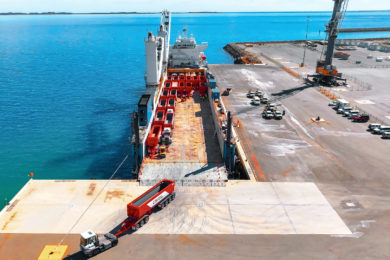The expansion of lignite (brown coal) mining in the EU could add 118 Mt to its annual carbon dioxide (CO2) emissions – nearly half Spain’s CO2 output in 2012 – according to analysis by Energydesk and Greenpeace. The analysis found that around 10% of the EU’s total CO2 emissions come from burning lignite, which releases more CO2 and other pollutants than hard coal. The data comes as EU leaders prepare to attend an international summit on climate change in New York next month (September).
Europe has committed to cutting CO2 emissions by 80-95% by 2050 but lignite mining is growing, with plans for two mines in Poland that would likely to add 20% to the country’s annual emissions.
Mines are becoming more extensive in places such as Germany and Poland – the top users of lignite in Europe.
In addition to the mines there are plans to enlarge and build plants that burn brown coal in several countries in the EU. Once again, these include Germany and Poland, but also Greece, Slovenia and Czech Republic.
Lignite is a volatile substance and unsuitable for transporting long distances – so the expansion of mines and the plants that burn the material often go hand-in-hand.
Burning lignite currently makes up around 10% of the EU’s total (2012) CO2 emissions – over 350 Mt of CO2 a year, according to an analysis by Greenpeace and Energydesk. This is a significant tranche, considering that only nine of the EU28 (almost a third) burn lignite.
On top of this the research revealed that plans for new lignite-firing units across Europe could add approximately another 118 Mt of CO2 – more than a third of current emissions from brown coal -according to data.
Though Germany is currently the largest user of lignite, Poland tops the list for future expansion – planning to emit 4.5 times as much as CO2 from its lignite firing as Germany, which still comes in second.
To fuel the plants there are plans for two mines in Poland (Gubin and Legnica) which together would add 20% to the country’s emissions. By 2050 their emissions alone would exceed Poland’s limit under EU emissions targets.
On the German side of the border Swedish operator Vattenfall’s lignite operation in Lusatia emits the same amount of CO2 as Sweden itself.
Greece, which relies on lignite for around half of its electricity generation – is pipped to the third spot for planned emissions by Romania. Bulgaria and Czech Republic aren’t far behind.
The expansion plans are designed to ensure more energy comes from domestic sources – but they threaten the EU’s ability to meet its climate targets. The potential CO2 emissions from brown coal reserves in Poland and Germany are more than 8,500 Mt, according to calculations by energy analyst Lauri Myllyvirta.
But to meet the currently proposed 40% 2030 EU target Germany and Poland would have to slash carbon emissions by 18,000 Mt on 1990 levels. The problem, therefore, would be that to meet the target while expanding lignite mining, would force emissions cuts elsewhere in society which are highly implausible.
Thus if these key countries continue to expand their lignite operations, this could have the knock-on effect of risking the EU’s ability to slash its carbon emissions – and even jeopardize a global climate deal.
Vattenfall recently noted that activists from several countries tried to form an “8 km human chain between Kerkwitz in Germany and Grabice in Poland. Greenpeace, Bund and Berliner Energietisch are some of the organisations that [took] part in the anti-coal chain on August 23.
“The initiative is targeting plans to expand lignite mining in the region. Vattenfall has announced its ambition to extend two existing open cast mines: Nochten and Welzow-Süd.
“The federal states of Brandenburg and Saxony have approved the plans and Vattenfall presently continues to work with the permission processes. This is expected to last for two to three years. Only after that a final approval from the authorities is expected.”
Wolfgand Rolland, Head of Business Communication Mining and Generation, reiterates Vattenfall’s firm conviction to be a partner in the German energy turnaround (Energiewende). “Vattenfall is investing heavily in renewable energy production in Germany. Last week we announced the decision to construct the Sandbank offshore wind farm in the German North Sea together with Stadtwerke München.”
However lignite will be crucial to meet the German electricity demand. It is also considered a reliable partner to volatile renewable energy sources since lignite can be used to balance load according to Rolland. “Lignite’s share of the gross production of electricity in Germany has been at a stable level of 25% for the last 15 years.”
Vattenfall picture by Kathrin Rößler.









